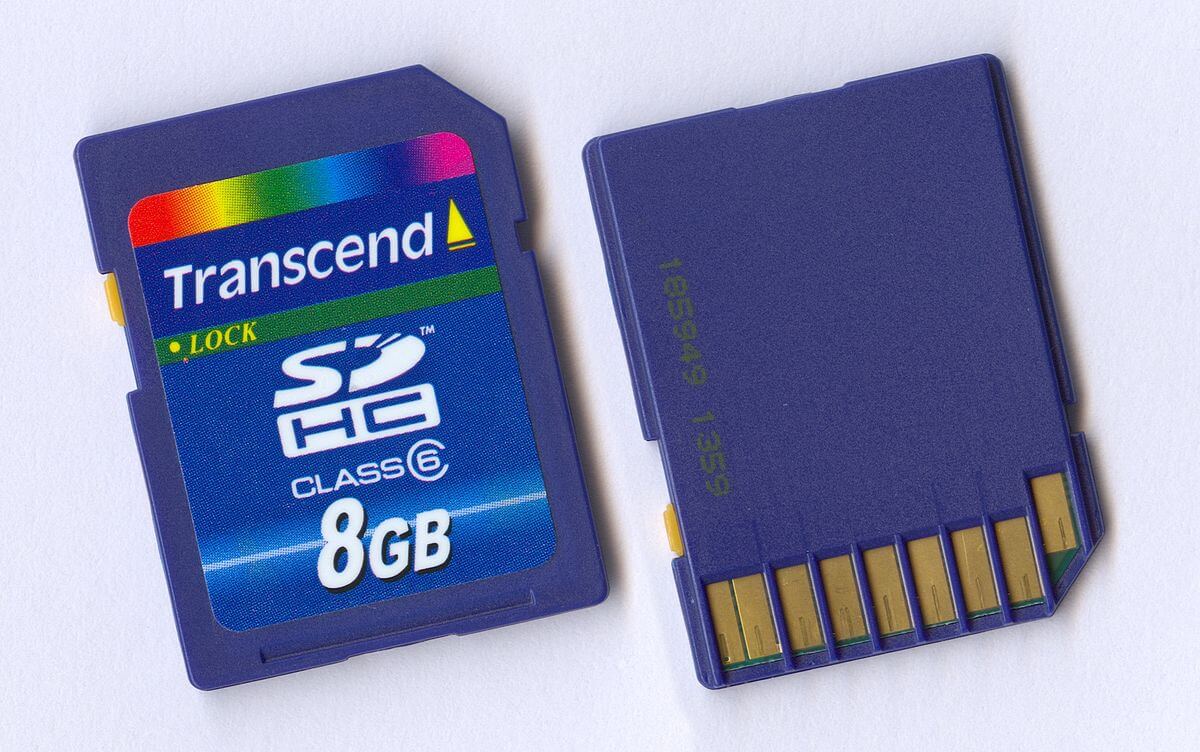Table of Contents
A Secure Digital card, also referred as such an SD card, is a kind of removable memory stick utilized in various mobile phones, cameras, digital phones, and more to read and store huge amounts of information.
It is now the standard industry memory card again for most consumer devices.
Understanding SD cards:
The Multimedia bulk SD cards was superseded by the SD card, which first became available in the year 1999. (MMC). It was one of several competing memory stick formats in use by consumer electronics, notably a new Memory Stick by Sony and the less common CompactFlash card.
The original SD card standard are modified numerous times to allow bigger capacity as the technology sector developed. Consequently, various types of SD cards are on the market and being used today.
- SD: No longer produced is the initial SD card. It employed the FAT16 system files and might store a maximum of two GB at a time.
- Secure Digital High Capacity (SDHC): The SDHC card was introduced in the year 2006. It utilizes the Microsoft FAT32 file system and offers up to 32 GB capacity.
- SDXC: 2009 saw the introduction of the Secure Digital extended Capacity (SDXC) standard. ExFAT file system storage space is 2 Terabytes’
- SDUC: 2018 saw the emergence of SDUC: Secure Digital Ultra Capacity (SDUC) cards that can shop 128 TB on every card utilizing exFAT.
Usage examples for SD cards:
Given their relatively tiny size and capacity to store gigabytes of information for just a very low cost, SD cards are widely utilized in a range of consumer devices. Camera systems, video game consoles, set-top boxes, home cinema gear like Blu-ray players, and the Internet of Things (IoT) devices like surveillance cameras all have them. Early cell phones used bulk SD cards; however, today, most phones use the tiny Micro SD card type.
Due to the extensive use of SD cards, many laptops and desktop computers come standard with SD card readers. For those who do not, there really are cheap USB hubs and media swipe cards that plug into the available USB port.
Important things to think about while buying SD cards in bulk:
As opposed to using an SD card inside an MP3 player or bitmap image frame, for illustration, one will need a faster card when buying one just for your Nikon DSLR or digital camera. Makers and other technology firms which use cards have strict guidelines for using permitted sizes or write speeds. The Key is effectiveness.
Essential SD Card Principles:
Before proceeding, one might want to review these mistakes while buying a microSD card in bulk because they explain certain facts and dispel certain myths. The following are the most important points to be aware of:
MicroSD vs SD. Each of these card types adheres to the exact standards, as well as all microSD cards have included an adapter that allows them to fit into the full SD card slot. These two card kinds are equal in this respect. The writing rates on full-sized cards do, nevertheless, often outpace that of their micro-sized counterparts.
Classes in speed. The minimal write rate of a card is specified by the speed category of the card, which may be Class 6 or U3. This is a very crucial factor in determining which cards are suitable for the task at issue, but it did not divulge what card is indeed the fastest. Furthermore, one must verify that the hardware is suitable for a particular speed category.
Do not trust fakes. Always purchase your SD cards from trusted vendors, preferably in the original box, instead of choosing the “frustration-free” alternative. On the present market, there are a lot of impersonations.
Photography SD Cards:
One will want, at minimum, one bulk SD cards if you have a camera in order to keep the photos. The preferred size and speed will rely on the kind of digicam you are using. Additionally, the pace affects how quickly the camera copies the images to your PC’s hard drive and how fast it saves these.
Low-Key Photography in bulk SD card:
The size of the card is more important than the velocity when taking casual photos using a juncture camera and JPEG format. With the images in the region of 5 MB, the SD card is unlikely to become a bottleneck. Compact cameras really are not known for their fast shot-to-shot intervals.
Photographic Art by SD card:
When choosing an SD card, consider both speed and performance if you are a more serious photographer using specialized tools, such as DSLRs, high-end mirrorless cameras, and even enthusiast-class mirrorless cameras.
SD Cards for Movie making
All today’s consumer video cameras work with SD cards; therefore, choosing the proper one is crucial. When you choose one that is too small, you will be restricted in how long you can film, and if you choose one which is too sluggish, you run the risk of suffering frame dips because the card can write the video data quickly enough.
Size, bitrate, fps, and file type are just some of the settings that affect the overall video quality that captures. You can use basic equations to determine
Meaning of Bulk TF Cards: What is a TF File?
The SD Association (SDA) accepted the T-Flash name, which was later revised to Trans Flash, but given it the new moniker microSD. MicroSD devices were extremely small flash storage cards. SanDisk created the format. Large mini-SD, as well as bulk SD cards, are extra memory cards that SDA has accepted.
Who Utilizes Large SD Cards?
The purchase and use of flash memory in huge volumes can be beneficial to individuals and organizations across a wide range of industries. Professional photographers and videographers can use bulk SD cards in digital surveillance cameras or give their customers their personal SD cards, which are filled with both videos and images.
Bulk SD card purchases may also be beneficial for other professionals working with AV equipment, portable devices, PCs, and other devices. Drivers can also use SD cards in a dashboard camera to help them monitor and track their trips, particularly those who travel a long distance or must retain an accurate record of their travels.




